These two single cartoons raise pressing questions to consider: are there similarities, patterns, or any form of association between the editorial cartoons published by Global Times and Taipei Times?; how are the identities of friend or foe constructed by cartoonists in Beijing and Taipei?; what artistic mechanisms are employed to enemize the other side?; and where does the portrayal of the United States sit within these cartoons?
In an era where information is consumed rapidly and often passively, political cartoons wield a unique power. They distil complex political conflicts into striking imagery, delivering messages with immediacy and emotional impact that written discourse struggles to replicate.
Such cartoons prod, deride, and scorn all in the name of humour and mockery, yet their underlying meaning is deeper, and their ultimate objectives are more cunning. Indeed, turn to newspapers from Beijing to Boston, and distilled before the reader are intricate political scenarios which serve as both a mirror and a weapon in the discourse of international relations.
Juan Alberto Ruiz Casado, and I recently undertook an analysis of editorial political cartoons featured in China’s Global Times and Taiwan’s Taipei Times between July 2022 and February 2024 in order to spotlight how cartoons construct discourse in political conflict and identity formation.
Our research shows that Global Times and Taipei Times are locked in a “cartoon war,” using political cartoons to attack and discredit their opponents. Despite coming from different political systems, both outlets use surprisingly similar techniques to paint “the Other” as an enemy.
These include:
- Depicting internal traitors who undermine their own side.
- Portraying the opponent as an imperialist power hungry for dominance.
- Suggesting that the enemy is economically or technologically weak because of its flawed ideology.
- Highlighting hypocrisy and a lack of moral values in the other side.
- Emphasizing military threats and violence from the opposition.
- Showing the rival as manipulative, using allies and international organizations for its own gain.
Here are some examples of the aforementioned. The first three cartoons come from Global Times, and directly prod at the US’s “interference” in the region, Taiwan’s nascency and sabotage of its own people’s safety, and the US’s own domestic challenges.
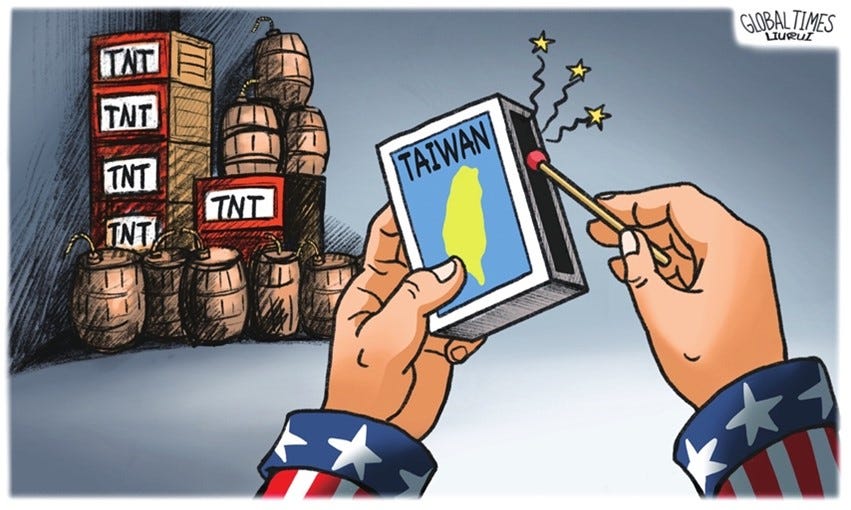
Cartoon by Liu Rui, Global Times, 19 July 2022, https://www.globaltimes.cn/page/ 202207/1270924.shtml, accessed 16 October 2024.
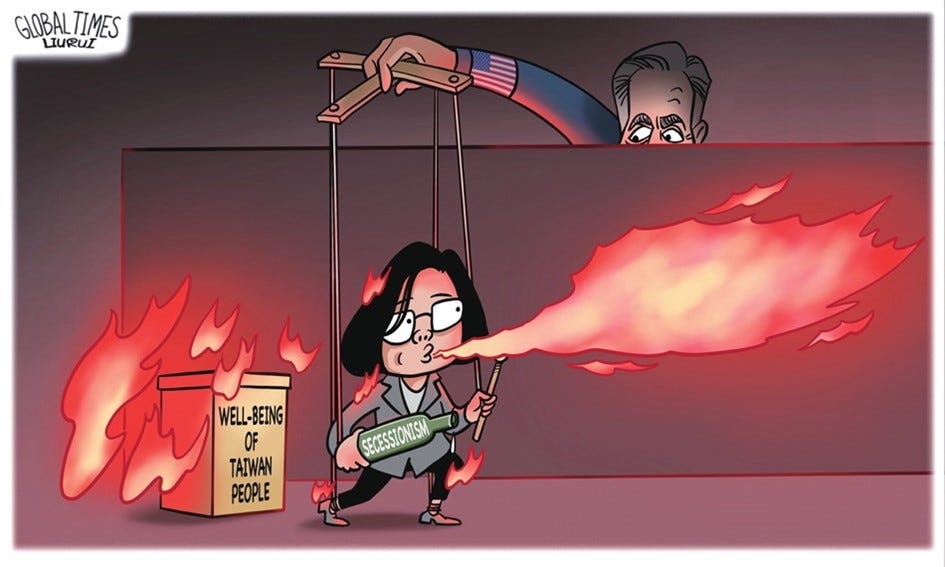
Cartoon by Liu Rui, Global Times, 6 April 2023, https://www.globaltimes.cn/page/ 202304/1288624.shtml, accessed 16 October 2024.
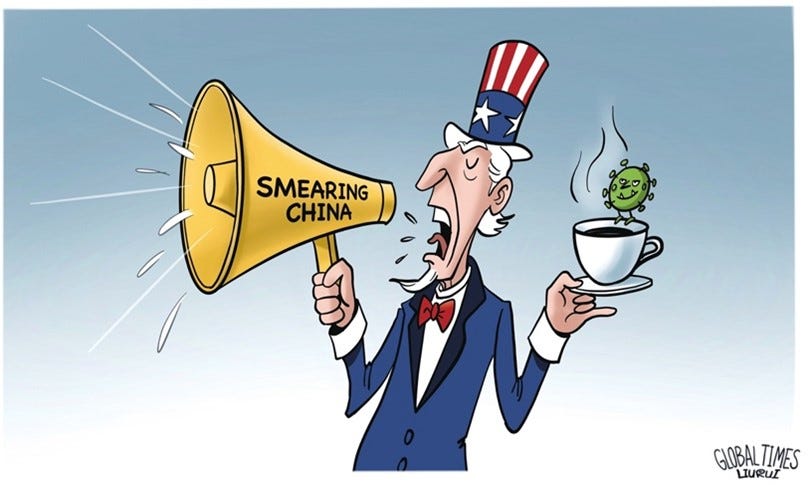
Cartoon by Liu Rui, Global Times, 18 January 2023, https://www.globaltimes.cn/page/ 202301/1283420.shtml, accessed 16 October 2024.
The latter three were published by Taiwan Times and depict China as a a dehumanized half-dinosaur, half-boar monster or directly prod at its domestic and moral issues.
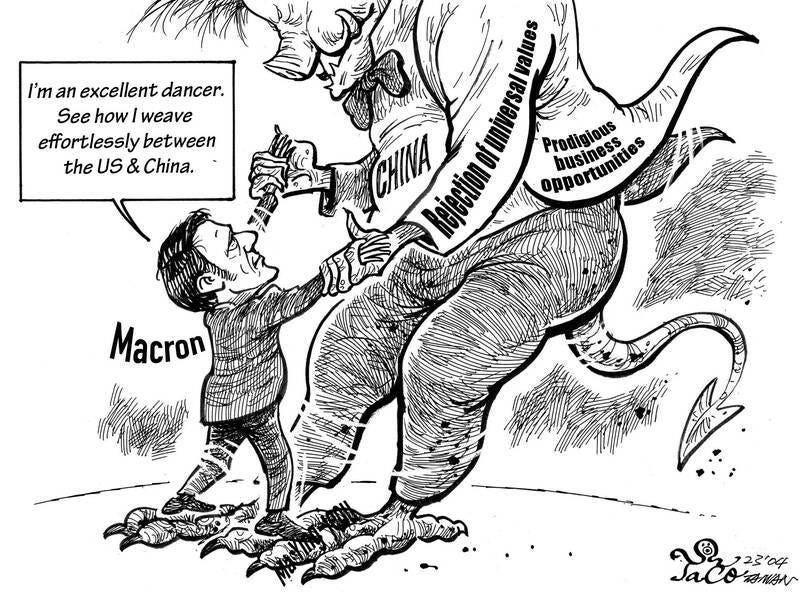
Cartoon by Taco, Taipei Times, 14 April 2023, https://www.taipeitimes.com/News/ editorials/archives/2023/04/14/2003797901, accessed 16 October 2024.
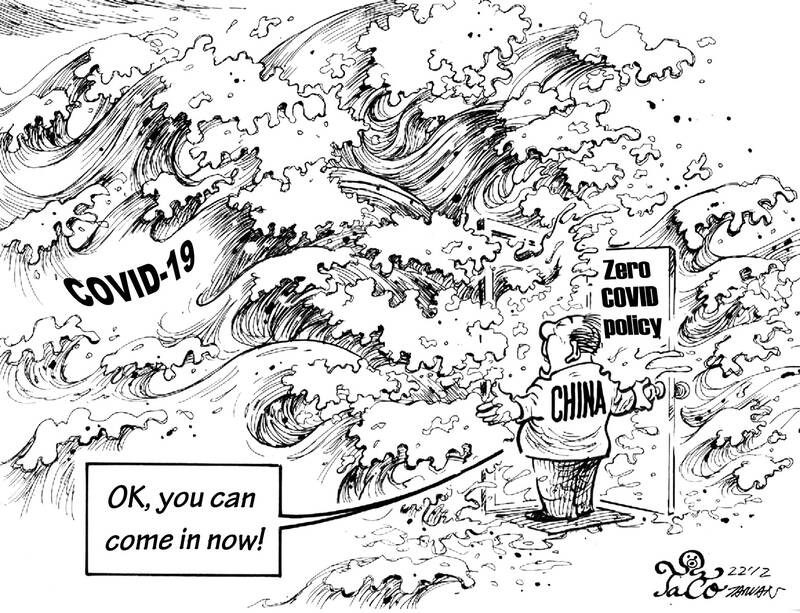
Cartoon by Taco, Taipei Times, 27 December 2022, https://www.taipeitimes.com/ News/editorials/archives/2022/12/27/2003791475, accessed 16 October 2024.
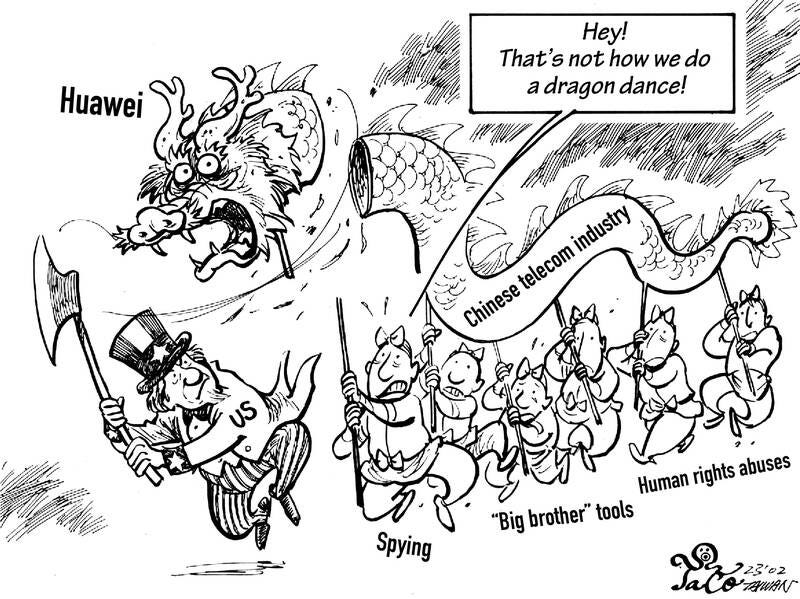
Cartoon by Taco, Taipei Times, 5 February 2023, https://www.taipeitimes.com/News/ editorials/archives/2023/02/05/2003793742, accessed 16 October 2024.
We also found key differences in the cartoons. Global Times focuses on the U.S. as the real villain—a scheming, dangerous force threatening China and global stability. Meanwhile, Taipei Times presents the U.S. as a heroic global enforcer, keeping China’s ambitions in check.
Most interestingly, we found that Taipei Times tends to use more extreme dehumanization than Global Times. Its cartoons often depict both internal and external enemies in harsher, more exaggerated ways, intensifying the sense of conflict and division.
Political cartoons have always played a key role in mocking politics and shedding light on power dynamics, both at home and around the world. Today, their relevance remains just as strong, perhaps even more so.
With the rise of new technologies like memes and social media, political cartoons can now spread faster and wider than ever before. These visual representations still have the power to shape political conversations, just as politics continues to influence the content and impact of the cartoons themselves.
In this way, cartoons are not simply playful jabs at political figures—they are instruments of discourse, framing the way conflicts are understood and how identities are forged.
The portrayal of enemies offers a clear example of how political cartoons contribute to the construction of “us” versus “them” narratives across the Taiwan Strait. Both Global Times and Taipei Times employ similar artistic strategies, yet their respective portrayals of the enemy differ to an extent in both tone and extremity.
As we continue to navigate the complexities of global geopolitics, it is essential to recognize the power of political cartoons in shaping public opinion and discourse. Indeed, cartoons are just one of numerous tools that shape the discursive practices in the Taiwan Strait; yet the cartoon wars revealed in the article tell us much about the political imaginaries in the region and the potential directions in which these may evolve beyond both pen and paper.
To read more about this research, the analysis and its findings, see: Juan Alberto Ruiz Casado and Natasha Lock. Imaginaries of enmity across the Taiwan Strait: The ‘cartoon war’ between Taipei Times and Global Times.